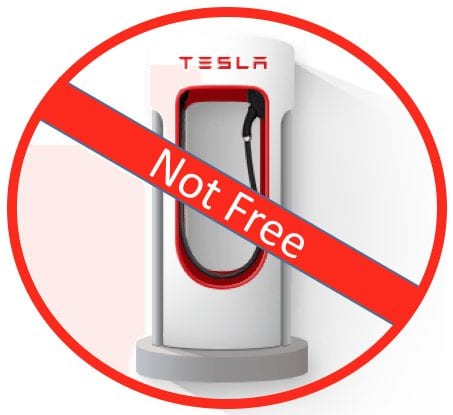 Just prior to the result that trumped all news stories for a week, Tesla announced that it Supercharging would no longer be bundled into the price of new Tesla vehicles for free. A narrow piece of Tesla fandom went wild while most of the rest of the universe paid attention the US election. Now that the election is in the past (if not its ongoing results), it’s worth returning to Tesla’s announcement to see what strategic values or challenges this would bring.
Just prior to the result that trumped all news stories for a week, Tesla announced that it Supercharging would no longer be bundled into the price of new Tesla vehicles for free. A narrow piece of Tesla fandom went wild while most of the rest of the universe paid attention the US election. Now that the election is in the past (if not its ongoing results), it’s worth returning to Tesla’s announcement to see what strategic values or challenges this would bring.
As always, it’s worth looking at what the announcement is, as opposed to what has been reported about it:
“For Teslas ordered after January 1, 2017, 400 kWh of free Supercharging credits (roughly 1,000 miles) will be included annually so that all owners can continue to enjoy free Supercharging during travel. Beyond that, there will be a small fee to Supercharge which will be charged incrementally and cost less than the price of filling up a comparable gas car. All cars will continue to come standard with the onboard hardware required for Supercharging.”
To paraphrase, you get about 1000 miles or 1600 kms of free Supercharger driving. After that, every time you plug into a Supercharger you pay per kWh.
That’s actually an interesting model. What does it solve?
- Convenience — Reading between the lines, Tesla drivers will basically still be able to pull up to a Supercharger, plug in, charge, and drive away without doing anything else. Their credit cards will be charged similarly to how they are via the Uber app. They won’t have to do anything other than plug in.
- Supercharger abusers — Tesla has played with this a bunch of ways, but there are a few very heavy Supercharger users in major urban areas who don’t bother to charge their Teslas at home and are hogs of the free resources. This diminishes that challenge going forward. It was a feature of Tesla’s original model which turned out to have unexpected consequences — because humans are human.

 Supercharger revenue stream — This allows the Supercharger network to continue to grow as a business unit. Given free land from people who really want Tesla owners to stop over for up to an hour and buy stuff, and relatively inexpensive tech, this is possible, but I suspect it’s just going to defray the cost of growth, not pay for it by itself.
Supercharger revenue stream — This allows the Supercharger network to continue to grow as a business unit. Given free land from people who really want Tesla owners to stop over for up to an hour and buy stuff, and relatively inexpensive tech, this is possible, but I suspect it’s just going to defray the cost of growth, not pay for it by itself.- Opening the network up — By tying Superchargers not to the purchase of a Tesla, but to a credit card transaction engine, this will enable other vendors to more easily leverage the Superchargers. I suspect that this will come with a Supercharger adaptor product for other cars which will have its own unique ID and enable credit card payments. Imagine pulling your Chevy Bolt up to a Supercharger, pulling out your adaptor cable, having it step down the voltage to the maximum your car can accommodate, and charging your credit card automatically. That’s a great use case and another product and service revenue stream for Tesla.
- Reduces concerns about Model 3s blitzing the Superchargers — When the number of Teslas on the road quadruples within a year or two of the Model 3 release, longer lineups at Superchargers will be one of the results. When people have a transactional cost associated with filling up which is higher than just filling up at home, they will make different choices.
- Commercial users — The people running limo services with semi-autonomous Teslas driving between Vegas and LA, for example, have effectively free fuel right now. This will ensure that those types of heavy users continue to be a revenue stream for Tesla as a cost of their business model. It will still be cheaper and better than gasoline, but it’s a reasonable business expense that they should be fronting.
Right now, the Superchargers are a tragedy-of-the-commons model, a free resource for every Tesla driver, and subject to the same kind of abuses. Putting a transactional price on them makes sense.
Source: CleanTechnica. Reproduced with permission.










